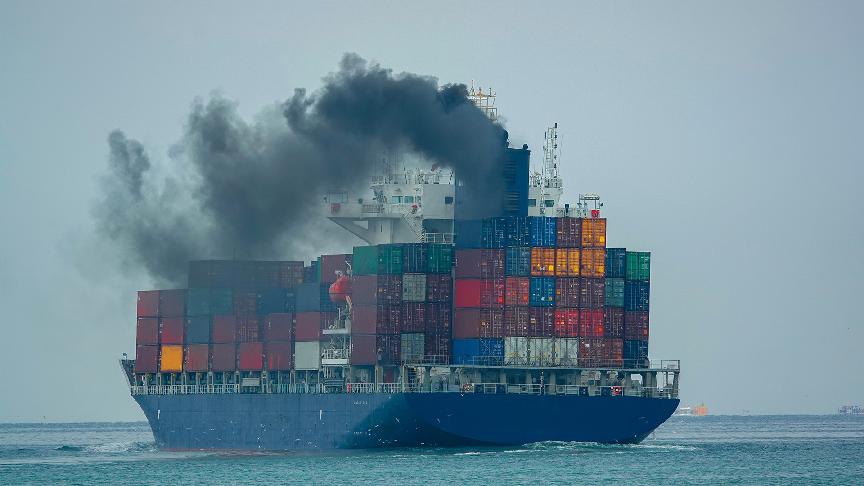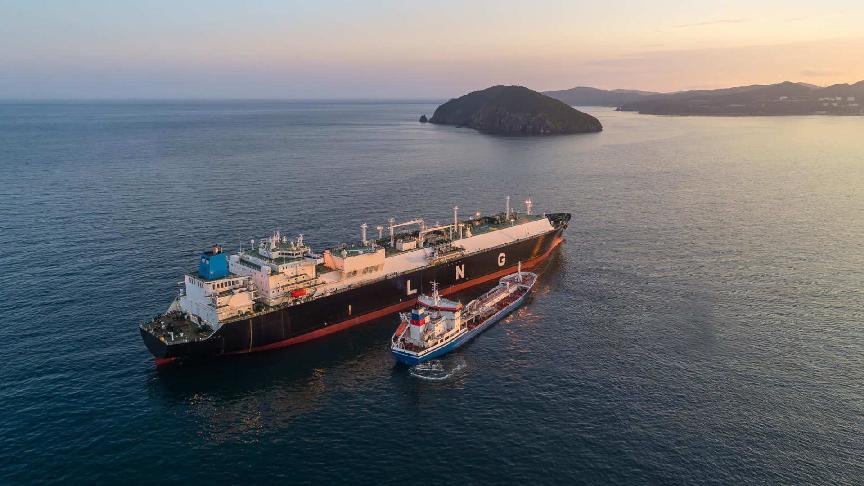2 April 2024 (Lloyd's List) - A $100-a-tonne carbon levy on shipping would result in the highest emissions cuts in 2030 as well as the highest costs, according to an early comparison of different green policy combinations for International Maritime Organization.
A preliminary report for the IMO by class society DNV, modelled scenarios to gauge the impact of measures such as a levy, a greenhouse gas fuel intensity standard (GFS) and fund-and-rebate ("feebate") tool.
The report, which is not yet public, forms part of the Comprehensive Impact Assessment being thrashed out for the Marine Environment Protection Committee to help countries find out which mid-term green rules would work best to get shipping to net zero by or around 2050.
It found a $100 per tonne of CO2 equivalent levy coupled with a GFS would cut shipping's lifecycle GHG emissions by 16% in 2030, compared with a GFS alone under a base case scenario. Other measures such as a lower-priced levy or a feebate mechanism would reduce emissions by less than 5%, compared with the base scenario.
Having a levy could mean shipping cuts its energy use by up to 9% in 2030 compared with business as usual, mainly because ships would slow down as soon as the levy was introduced.
DNV tallied the potential costs to shipping of five green measures in 10 scenarios in its preliminary report, and is continuing to refine the work.
The IMO last year committed to adopt an economic measure (GHG price) and a technical measure (GFS) when it revised its GHG strategy in July. The early-stage DNV report was shared with the IMO's GHG working group (ISWG-GHG 16) in March, the week before the recent MEPC81 meeting.
The new IMO strategy sets a 20% emission reduction target for 2030, striving for 30%, while the target for 2040 is 70%, striving for 80%. It targets net zero by or around 2050. The lower band of these targets require shipping to cut emissions to 771m tonnes of CO2 equivalent in 2030, 289m tonnes in 2040 and eventually zero in 2050, compared with its 2008 baseline of 934m tonnes.
One of the decisions before the MEPC is whether to count only ships' tank-to-wake, or onboard emissions when crafting regulations, or to count the upstream (well-to-wake) emissions from producing ship fuels as well.
DNV said it was not possible to model scenarios with a TtW scope that would achieve the WtW GHG emission trajectories in 2040 and 2050.
Its report considered ways to cut emissions including alternative fuels, onboard carbon capture and energy efficiency measures. But it did not examine the specific policy proposals that countries and NGOs have put to the MEPC.
Biofuel demand in all scenarios in 2030 and 2040 exceeds expected supply of advanced biomass, the primary feedstock for biofuels, DNV said, noting that this would likely boost biofuel prices nearly to those of renewable hydrogen-derived e-fuels such as green ammonia and green methanol.
Economic measures that reward companies for using green fuels could more than close the cost gap between fossil fuels and green alternatives, if the reward rate is set high enough, DNV added.
Cost increase analysis
A $100 levy increases global shipping costs by 28% in 2030 - the most among 10 different scenarios - if the IMO introduces such a measure along with a well-to-wake fuel standard. Other measures boost shipping costs between 8% to 24% in 2030 compared with business as usual.
All 10 combinations of scenarios increase shipping costs ($/tonne mile) in a range of 31% to 41% in 2040 to achieve the IMO's target of cutting emissions by 70%, while cost increases from these measures range from 45% to 51% to achieve the net zero target in 2050.
Meanwhile, hitting the higher targets the IMO is 'striving for' would increase shipping costs by at least 13% in 2030, 38% in 2040 and 51% in 2050.
Candidate measures
The Marshall Islands had tabled a well-to-wake $100 levy at the IMO ahead of MEPC80, but the island state revised its proposal to $150 per tonne of CO2 ahead of MEPC 81. The Pacific Islands also support a simplified fuel standard to complement a levy.
A tonne of bunker fuel oil emits around 3.1 tonnes of CO2 equivalent on a TtW basis, according to the IMO's lifecycle GHG intensity guidelines (LCA). This means that a $100 CO2 levy would translate to around $310 per tonne of bunker fuel oil. The IMO doesn't have exact well-to-wake emission numbers for bunker fuel oil in its LCA guidelines.
There are two TtW proposals on the IMO's table: China's proposal for a fuel standard with an integrated flexibility mechanism rather than a standalone economic measure, and the International Chamber of Shipping's fund and reward proposal. The Chinese proposal plans to consider well-to-wake emissions at a later date. Japan put forward a fund and reward proposal on a WtW basis.
The IMO has separately tasked the UN Committee on Trade and Development to conduct an analysis on mid-term measures' impact on all IMO member states. Unctad's report will analyse whether states will face disproportionately negative impacts from such measures.
Some poorer and middle-income countries, as well as the US, have opposed the idea of a carbon levy, saying it would hurt their economies. States have also voiced reluctance to discuss the nuts and bolts of the different green policies until the IMO's comprehensive impact assessment is finished.
Greener-minded states, including vulnerable island nations, argue that measures without a carbon levy would be too weak to work, though most states are not yet ready to name a price per tonne they are happy with.
DNV will run a further eight scenarios before finalising its report, including scenarios that model higher global trade growth and other factors.
The report said it was not feasible to define and run scenarios that cover all possible emission trajectories, policy combinations and input ranges, "taking also into account the likely span and uncertainty of other key inputs when looking more than 20 years into the future".
"The interaction between levy, reward, GFI requirements, fuel supply and demand and fuel prices will need to be investigated in later parts of the study," the report said.
"The levy revenues also need to be sufficient to cover the reward expenses and other disbursements."







